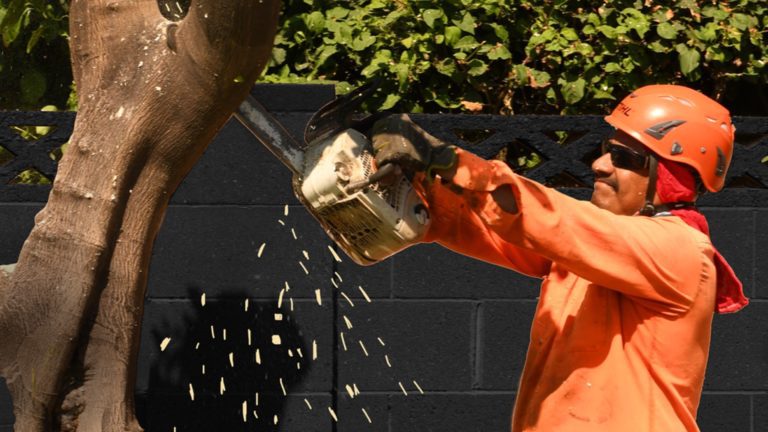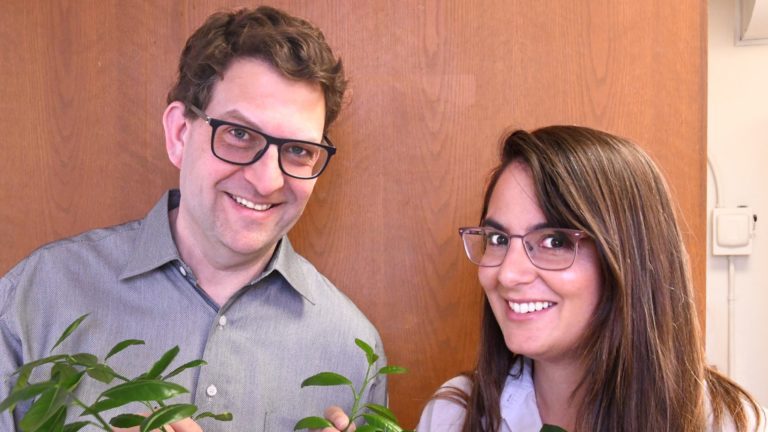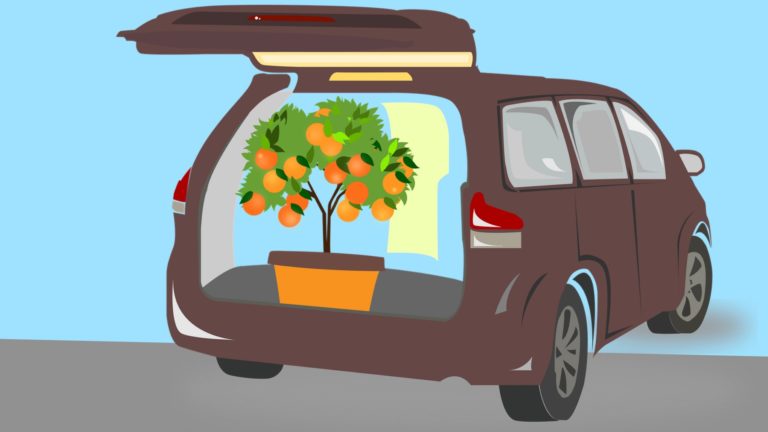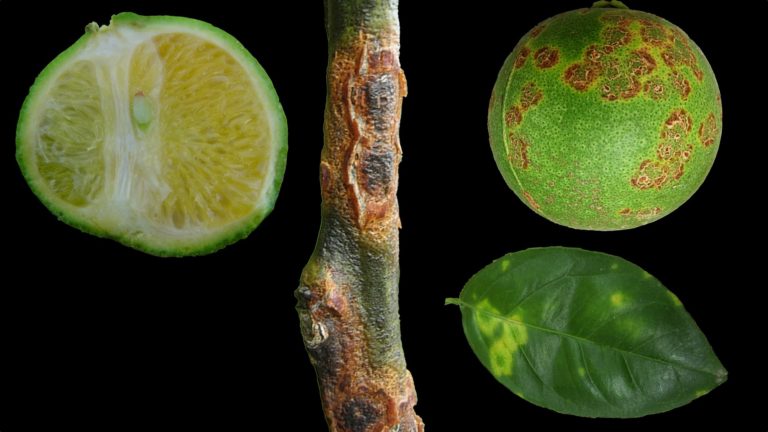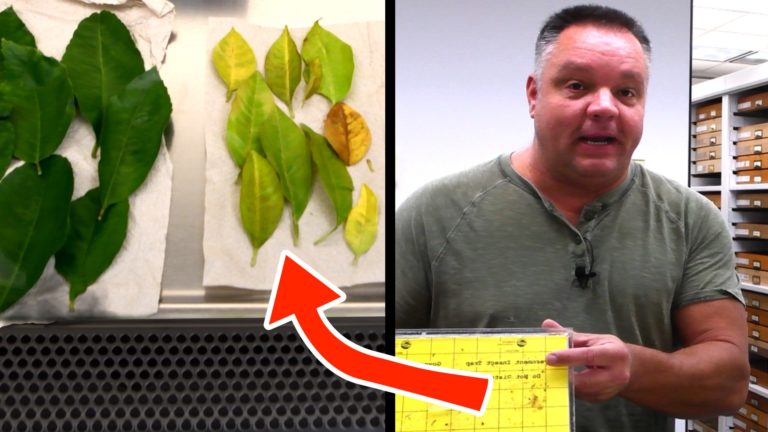Citrus Tree Care – Fertilizing Citrus Trees and Other Questions Answered by Dr. Ashraf El-Kereamy

In the following video on citrus tree care, I visited Dr. Ashraf El-Kereamy to get answers to reader questions on various topics including fertilizing citrus trees, watering citrus trees, potting citrus trees, transplanting citrus trees, pruning citrus trees, and citrus disease. Ashraf (email: ashrafe@ucr.edu) is a Cooperative Extension Citrus Specialist and faculty member at the Department of Botany and Plant Science, at the University of California Riverside.
Below you will find the resources mentioned in the video as well as a transcript.
Resources
CDFA Hotline: 1-800-491-1899
California Citrus Threat Website
University of California Agriculture and Natural Resources
UC Cooperative Extension
Citrus Clonal Protection Program (CCPP)
How to order certified budwood
Citrus Tree Care – Transcript
How to Water and Fertilize Citrus Trees
Question: When and how should a citrus tree be watered and fertilized?
Answer: Watering and fertilizing citrus trees — It's a very very important issue when you plant the trees. Watering and fertilization will control the size, the growth, and the fruiting of your tree. You have to decide when to water the tree based on the soil moisture itself. You cannot go here and see, in the surface here, and say “Okay that needs water”. No. Actually the roots of the tree are down there, so we need to measure the soil moisture inside the soil. So for this, easily you can buy one of those soil moisture meters. So you stick it through the soil here and go deep to the depths that you want. Like say for example now it's 12 inch and you can see the reading now. It is eight out of ten here which is good for this tree. And if you see low moisture in the soil so you need to add it. That would depend on the soil type, the location of the tree, time of the day, lots of factors. So based on the soil moisture you can irrigate or not. About fertilization. The plants need what we call Macro elements that need to be added to the trees in a large amount. And then you have the microelements which need to be added to the trees in a small amount. To decide when to add those fertilization we add it in the beginning and also during the growth of the tree you need to add it regularly. And then sometimes you have to get your tree tested for those Macro and Micro elements to be able to decide when and how to add those nutrients. Sometime we add them through the soil water on the soil. Sometime we spray them like the Micro nutrients. Micro nutrient we prefer to spray them so we don't lose them in the soil. If you see any deficiency symptoms in the tree it's better to get your tree tested for nutrients and see what is missing so you can add it.
Repotting Citrus Trees
Question: When growing citrus in pots how often should I repot and how should I do it?
Answer: Growing citrus trees in pots will require from you more attention regarding the irrigation or the watering, fertilizers, and pruning. In the beginning, when the trees are young, they don't need too much space. So small pots would be fine. Until you see the roots everywhere in the pot and that's an indication of the need for transplanting or moving to another bigger root pot. And when you decide to do that, jut irrigate the trees really well so you can keep the soil attached to the roots so you don't get the roots exposed to the air because those are evergreen trees and they are active all the time of the year. And if you expose the roots to the air they will die. Take the tree with the roots with the soil out from the pot and put it in a bigger pot and immediately add the soil and start irrigating the trees. Think the maximum size of the tree that you can go for that like this kind of tree. Like here look at the trunk here. With the bigger pot you can have the tree like this. Once you reach this size of tree, you need to keep it small and prune it from time to time to keep it at this height or the level you want.
Transplanting Citrus Trees
Question: Can I transplant my orange tree to a new location without killing it?
Answer: So transplanting the citrus tree can be problematic for two reasons. The first reason that we don't like to move the trees around even from your back yard to another back yard because that's will help spreading the HLB disease and the insect Asian citrus psyllids the insect that transmit the disease. The second reason also because a citrus tree is an evergreen tree. They have the leaves all year round. They don't lose the leaves. And the tree including the roots the are very active all year round. So to transplant them or move them from one location to another say for example, I don't like this location of the tree I want to move it here within my backyard. I can do that. But to do that you need to know where are the roots of this tree. The roots of this tree are at the limit of the canopy of the tree. Say for example that is the limit of the canopy. If you go down here that is the limit of the roots of the tree. So if I want to transplant it so I have to protect the roots all the roots here in this area. And in this case what I would do just before digging I would irrigate the tree so I can have a good soil moisture here around the roots. And then I will dig to around one foot depth or until I don't see any roots. And then I will move the whole thing, the soil with the roots intact and to another hole which is already prepared. And put some dirt and then irrigate immediately. And that is how we can transplant your citrus tree safely without any problem.
Potting Mix for Citrus Trees
Question: What's a good potting mix for a citrus tree?
Answer: There is no specific potting mix for a citrus tree. You can use any potting mix you are using in your garden or in your backyard or whatever you buy from the store. But a good potting mix has to provide the soil moisture and the air for the roots of the tree. Those mix in the stores or any potting mix you are using should provide those too. Just try to avoid any recent organic materials. At least you need to leave them for around six months, the compost. So they can get rid of the heat. In the beginning of the process. They start producing lots of heat and this heat can be very bad for the roots of the citrus tree if you add it to citrus trees especially in the beginning when they are young like this.
Citrus Trees from Big Box Stores
Question: Are citrus trees from big box stores safe to buy? Will they be free of disease?
Answer: Buying citrus trees from big box stores is safe and fine because those trees are coming from registered nurseries and those nurseries are under regulations. And trees should be inspected and should be disease free.
Question: What citrus trees would be risky to purchase?
Answer: We don't recommend buying citrus trees from unknown sources. For example, the plant sales or someone's who's grafting them by himself and selling to you. And sometime you find some people selling trees in the intersections and you just stop by and buying. Don't buy those trees because you don't know the source, you don't know if they are disease free or not. So if you want to buy just go for a very known source and buy it.
Testing Citrus Trees for Disease
Question: How can people have their trees tested and treated for disesase?
Answer: You can get you citrus tree tested for diseases. If you want to do that you just contact your local citrus University of California Cooperative Extension advisor. It should be close to you. We have offices everywhere in the state. In each county we have an office. And he will be able to guide you throughout this process. And if you suspect that's HLB symptoms you can call the hotline at CDFA website also.
Citrus Tree Stopped Producing Fruit
Question: I have a large lemon tree that produced a lot of fruit but stopped producing a couple years ago. What should I do?
Answer: Stop producing fruits from the lemon tree or any other citrus tree — It is an indicator for having a problem in a tree. It can be related to fertilizers or it can be related to some diseases. So it's better if you suspect any of this, like disease or any fertilizer problem just to contact your local University of California Cooperative Extension advisor. We have offices everywhere in the state. In each county we have one office. And then in each office we have different experts. They have one in each crop and they will be really happy to help you. Guide you through this if they need to be tested or something need to be done with the tree. They will be very happy to help you in that.
Hand Pollination of Citrus Trees
Question: I only planted one citrus tree. Do I need to hand pollinate to get fruit?
Answer: So the short answer for this, no. You don't need hand pollination or another pollinator beside your original tree of citrus. The reason behind that that the flower of the citrus tree contain the male and the female organism. And once it's open the bees will do all the job and move the pollen grains from either one other flower in the same tree or from other tree to your original flower and make the fruit set happen and you get the fruits. So you don't need hand pollination or pollinators for citrus trees.
Citrus Tree Not Producing Fruit – Should it be Grafted?
Question: My citrus tree is not producing fruit. Should I graft to it?
Answer: We have more than one reason that causes citrus tree not producing fruit. The first reason, if you don't see any flower on the tree it means that this tree was propagated from seeds which is not normal way to propagate the citrus tree. Like say for example you get oranges and you like it at home and you take the seeds and plant it and get this tree. And it's normal that those trees coming from seeds they will take longer time to produce fruits. And beside this if not the case you have to check other condition like soil, the water, and the fertilizer you are using for those tree. Look at those and see if anything is wrong you can correct it. If you see all these condition is optimum and you don't see any fruits on the tree, and you want to change it, it's easy. To change it, you can cut it back and then graft it. And to graft it you have to get a clean buds and that is easy. You can go to the website of the CCPP and order the clean buds from the variety you like and you will receive it in the mail and you can easily bud it.
Restricting Citrus Tree Height by Pruning a non-dwarf Citrus Tree
Question: Is it possible to plant a non-dwarf tree and restrict its height by pruning instead of buying a dwarf tree?
Answer: So you don't need to buy a dwarf citrus tree to have a smaller tree. You can use the regular trees to have a smaller tree. Like this here that is a tango mandarin. The tree's pretty small and by pruning you can keep the tree small. Like if I wanna have this tree in this shape right here so I should remove everything that's going out. Like say for example here you need to remove this one through the pruning. So when you cut it as we said before you need to cut it at 45 angle like this so the water doesn't stand on the cut. Take one here. You do the same thing. It's better if you can make it in a regular basis but light cuts. Don't remove big big branches at once because when you remove big branch, first you have a big cut and this big cut can be exposed to any other disease. Also when you have a big cut, that will induce new flushes, new growth, lots of new growth. And that will be good for the Asian citrus psyllids, the insect that can transmit the HLB disease. So it would be a good chance for them to go there. So to avoid this, just make it light pruning at a regular basis. You can prune it anytime. You remove any branch that is going out of the tree or out of the shape that you want. It's better if you remove the branch from where it is attached to the mother branch like this one here if you can. If you cannot just cut it at a 45 degree angle. Like this branch here is going up there, upwards, and probably if I want to keep my tree short here, I would remove it from here. See now you keep the tree small. So there is no need to buy a dwarf tree to have a smaller tree. Like this one is a regular tree and by pruning you can keep it small.
Protecting Citrus Trees from the Cold
Question: Is there some way that I can protect the citrus tree to grow it in a cold area?
Answer: Protecting your citrus tree during the winter from the cold weather, that is a very important for your tree to keep them productive and fruiting. There's so many factors that you need to take care of it. The first one is the location. You need to chose the location, a warmer location in your backyard or in your area to plant the trees. It's like here, we plant them in the foothill where it's a warmer location so the trees they got warm air during the winter so they don't get hit too much with the cold weather in the winter. The other thing you need to take care of it, don't make any operation in the tree that can produce new shoots by the end of the summer. The new shoots by the end of the summer will not resist the cold temperature in the winter. For example, don't cut the tree very harshly at the end of the summer during the pruning so you'll induce more shoots. Those shoots will be very very susceptible to cold temperature. And also don't add too much nitrogen by the end of the summer to produce more shoots. Those shoots will be killed during the winter also. Irrigation also. Don't irrigate too much by the end of the summer so the trees will feel that they are going into the winter and make them more tolerant to cold temperature. Also there is also some kind of bags that you can put it on the top of the small trees. They are available now. They can protect the trees, the young trees, from the cold temperature in the winter also.
Funding
This article was funded by a grant from California’s Citrus Research Board.

